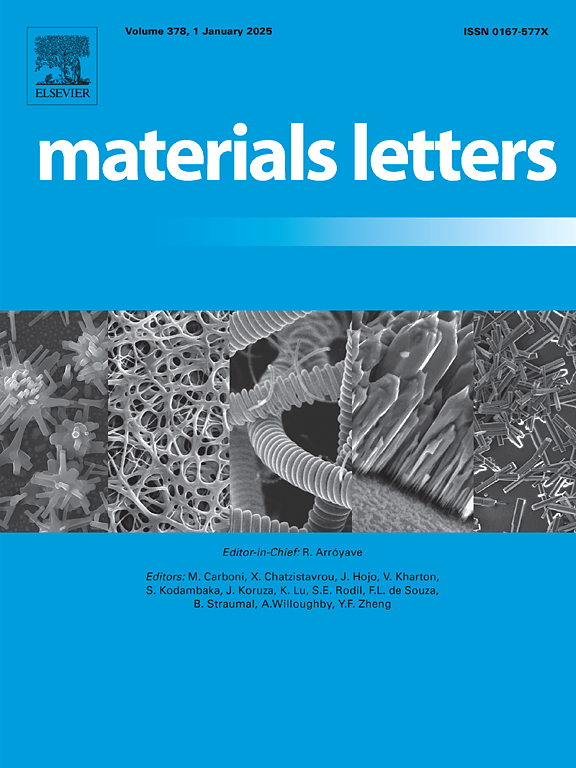约束结构和扩展层间距对MoS2/C高效倍率和循环性能的协同效应
IF 2.7
4区 材料科学
Q3 MATERIALS SCIENCE, MULTIDISCIPLINARY
引用次数: 0
摘要
过渡金属硫化物(tms)是一种很有前途的全固态锂电池(ASSLBs)正极材料,但其电子导电性差,体积膨胀严重。我们通过简单的水热合成法制备了具有扩展层间距(0.71 nm)的MoS2/C纳米球。放射状排列的纳米片结构最大化了电化学活性边缘位置,而扩展的中间层增强了Li+扩散动力学。原位形成的碳层提供了双重好处:抑制体积变化的结构限制和提高电子导电性。MoS2/C纳米球在1C下循环250次后提供385.1 mAh g - 1的卓越容量,大大优于大块MoS2和MoS2纳米片。这种结合层间扩展、分层形态和碳约束的协同设计为高性能ASSLBs阴极建立了有效的策略。本文章由计算机程序翻译,如有差异,请以英文原文为准。
Synergistic effects of confinement structure and expanded interlayer spacing on MoS2/C towards high-efficient rate and cycle performance
Transition-metal sulfides (TMSs) are promising cathode materials for all-solid-state lithium batteries (ASSLBs) but suffer from poor electronic conductivity and severe volume expansion. We developed MoS2/C nanospheres featuring expanded interlayer spacing (0.71 nm) through facile hydrothermal synthesis. The radially arranged nanosheet architecture maximizes electrochemically active edge sites, while the expanded interlayers enhance Li+ diffusion kinetics. The in-situ formed carbon layer provides dual benefits: structural confinement to suppress volume changes and improved electronic conductivity. The MoS2/C nanospheres deliver exceptional capacity of 385.1 mAh g−1 after 250 cycles at 1C, substantially outperforming bulk MoS2 and MoS2 nanosheets. This synergistic design combining interlayer expansion, hierarchical morphology, and carbon confinement establishes an effective strategy for high-performance ASSLBs cathodes.
求助全文
通过发布文献求助,成功后即可免费获取论文全文。
去求助
来源期刊

Materials Letters
工程技术-材料科学:综合
CiteScore
5.60
自引率
3.30%
发文量
1948
审稿时长
50 days
期刊介绍:
Materials Letters has an open access mirror journal Materials Letters: X, sharing the same aims and scope, editorial team, submission system and rigorous peer review.
Materials Letters is dedicated to publishing novel, cutting edge reports of broad interest to the materials community. The journal provides a forum for materials scientists and engineers, physicists, and chemists to rapidly communicate on the most important topics in the field of materials.
Contributions include, but are not limited to, a variety of topics such as:
• Materials - Metals and alloys, amorphous solids, ceramics, composites, polymers, semiconductors
• Applications - Structural, opto-electronic, magnetic, medical, MEMS, sensors, smart
• Characterization - Analytical, microscopy, scanning probes, nanoscopic, optical, electrical, magnetic, acoustic, spectroscopic, diffraction
• Novel Materials - Micro and nanostructures (nanowires, nanotubes, nanoparticles), nanocomposites, thin films, superlattices, quantum dots.
• Processing - Crystal growth, thin film processing, sol-gel processing, mechanical processing, assembly, nanocrystalline processing.
• Properties - Mechanical, magnetic, optical, electrical, ferroelectric, thermal, interfacial, transport, thermodynamic
• Synthesis - Quenching, solid state, solidification, solution synthesis, vapor deposition, high pressure, explosive
 求助内容:
求助内容: 应助结果提醒方式:
应助结果提醒方式:


